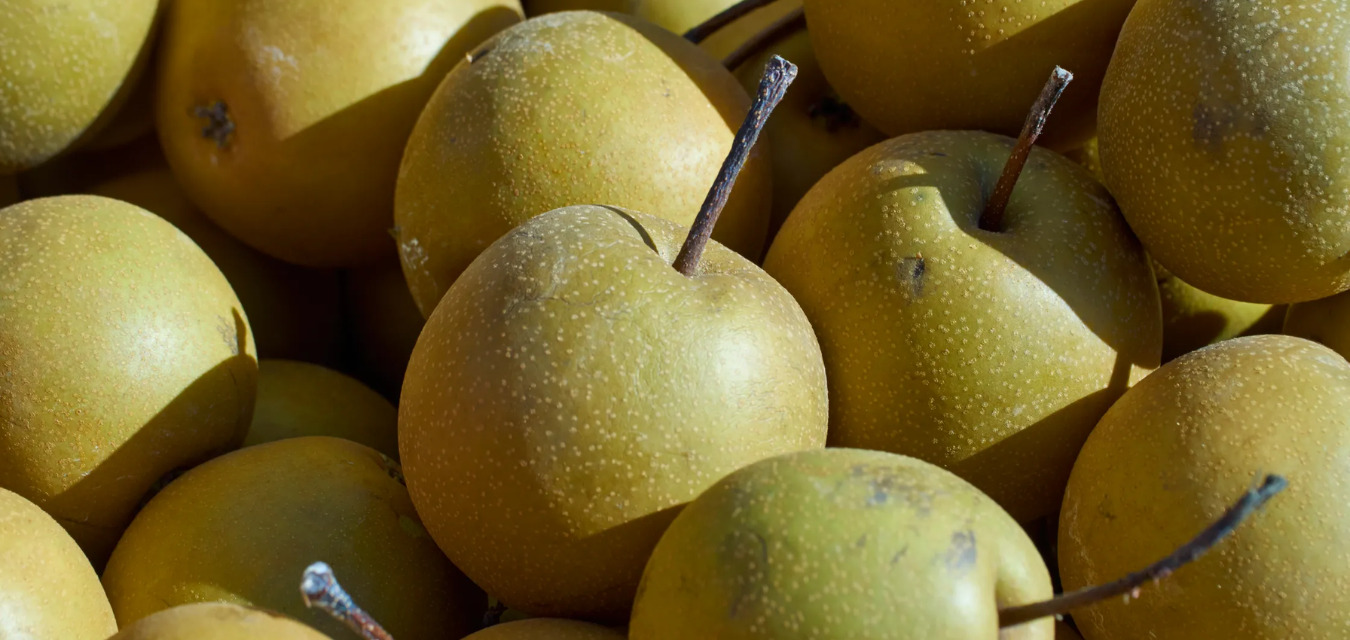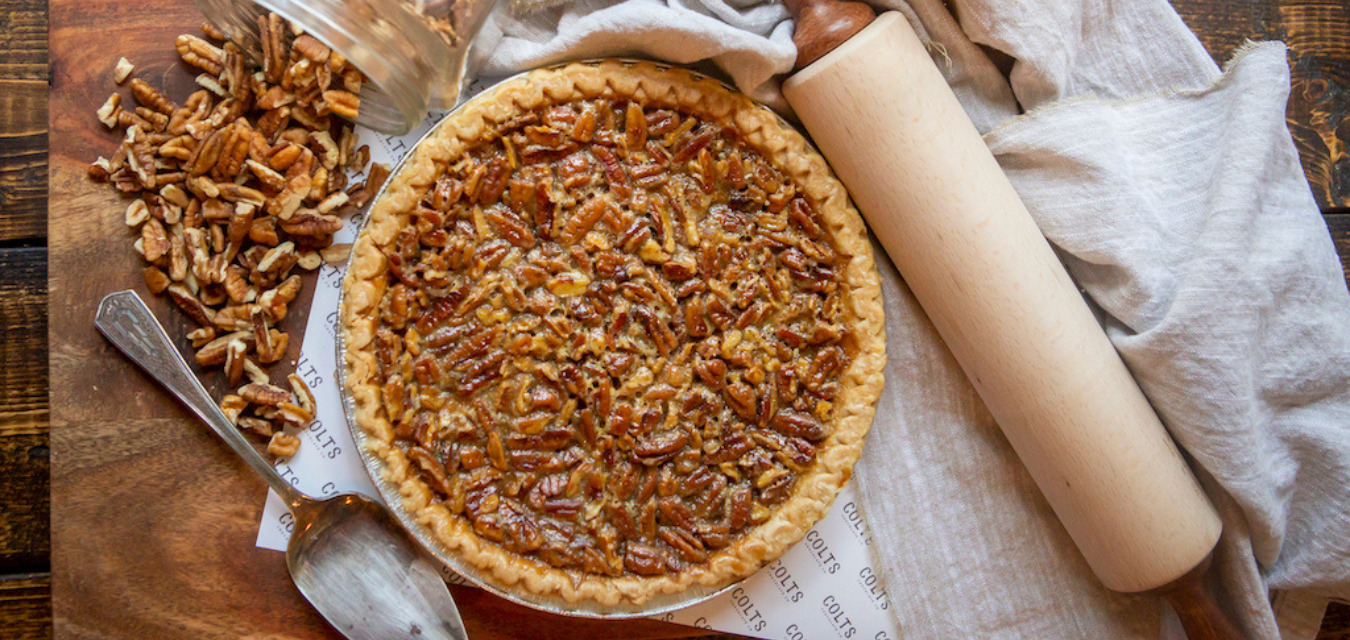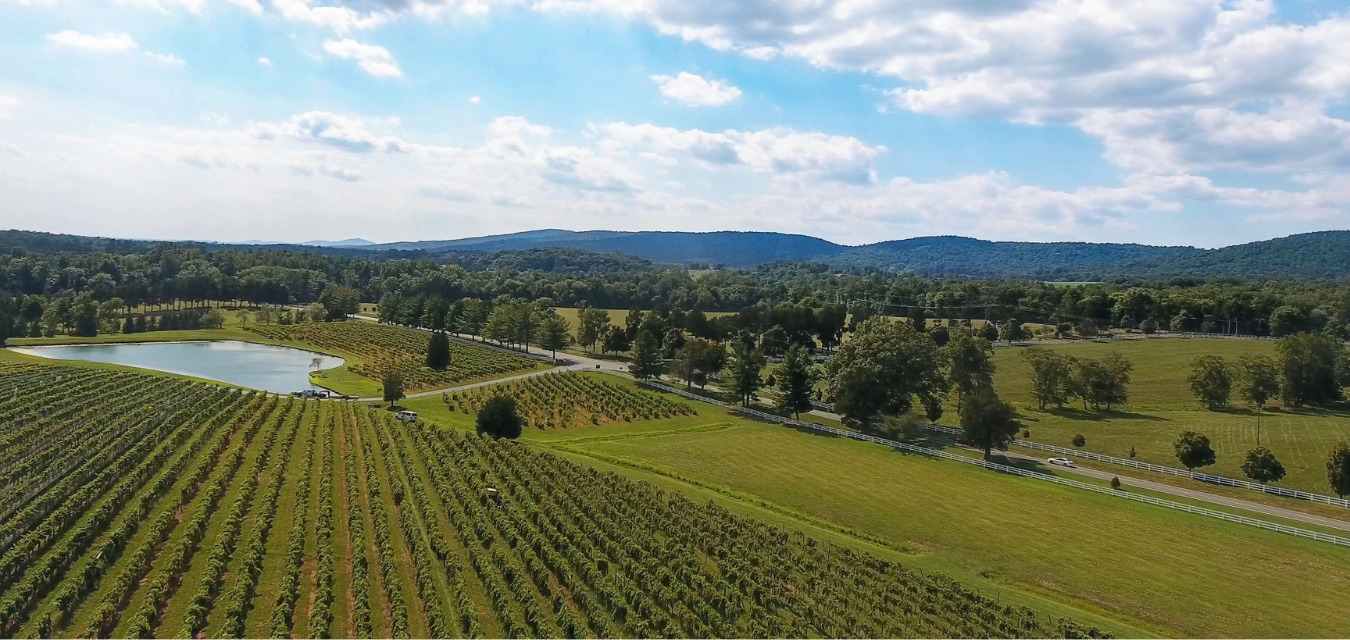One Virginia restaurant and wine bar is using Asian pears in sweet and savory ways
For restaurants that depend on seasonal ingredients, cooler months can be a tough time. Nate Sloan, the chef of bloom in Roanoke, Virginia, designs plates around what he can source from Virginia’s Blue Ridge mountains—which, he admits, is slim during November and December. Cue the Asian pear. Sloan says, “Usually a pear is a lot to eat on its own, but we like to pair it raw with something savory, especially in the winter when you’re having homey flavors.” The texture, too, “helps lift a dish and provides acidity and freshness to heartier flavors.” Round like an apple but with the delicate skin and crisp, lightly floral flavor of a pear, this fruit appears in abundance in bloom’s kitchen during the late fall and early winter, gifted by nearby friends as well as sourced from orchards around the Shenandoah Valley.
Subtle and Sippable
For cocktails, Sloan creates a simple syrup with reduced pear concentrate. The subtle fruitiness pairs well with gin and tequila and even in bloom’s seasonal pear sangria.
Complementary Acidity
Asian pear adds juicy, fresh acidity to a savory plate. Sloan loves it with a meaty piece of grilled swordfish, the fruit sliced into teeny matchsticks; small-diced for a relish or salsa garnish; or even shaved into thin slivers with a mandolin. “I like the snap the pear brings to it. It’s almost like a water chestnut as it crunches,” he says.
Versatile Flavors
Often, Sloan uses Asian pear in a rustic dessert, like a crostata or galette that, he says, “preserves the beautiful, fresh element of what an Asian pear is.” But for a recipe that lends itself to both sweet and savory uses, he creates a frosty granita to top raw Old Salt Rappahannock oysters on the half shell (like a sweet-and-sour mignonette) or spoon over custard, letting it melt into a delicate sauce.
Asian Pear-Elderflower Granita 
yields
Makes about 3½ cups
3 cups pear juice
3 tablespoons plus 1 teaspoon fresh lemon juice
⅓ cup plus 1 tablespoon 1:1 simple syrup
3 tablespoons plus 1 tablespoon elderflower liqueur or cordial, such as St. Germaine
ingredients
steps
- In a freezer-proof, wide-bottom container, whisk to combine all ingredients. Total depth of liquid should be roughly ¼ of an inch. Freeze for 30 minutes.
- After 30 minutes, remove container from freezer; liquid should have begun to freeze around edges and top of surface. Scrape mixture with a fork to break up ice and return to freezer. Repeat this process every 30 minutes for 3 to 5 hours. Granita is done when mixture is completely frozen and appears dry and flaky, like finely shaved ice.
keep reading
At the Table
9 Ways To Use Cranberries This Season
Looking to reinvent your traditional dishes? We’ve compiled nine of our favorite ways to incorporate cranberries in your holiday favorites.
At the Table
10 Pie Recipes for Autumn Baking
From buttermilk to butternut, our best pie recipes make for fun fall baking projects and the perfect way to finish holiday feasts.
Partnered
20+ Award-Winning Wineries On the Monticello Wine Trail in Charlottesville & Albemarle County, Virginia
Escape to the Monticello Wine Trail of Virginia Wine Country in Albemarle County and plot your visit to 21 award-winning wineries.
share
trending content
-
9 Noteworthy Georgia Restaurants | Listen
by Lia Picard -
Grill Essentials
by Tate Jacaruso -
New Myrtle Beach Restaurants Making Waves
-
Staff Meal
by Tate Jacaruso -
In the Spirit: Distillery of Modern Art (DoMA) | Listen
by Amber Chase








